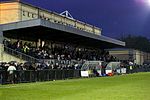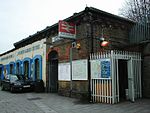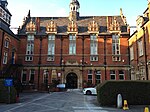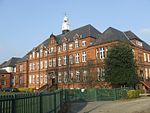East Dulwich
Areas of LondonDistricts of the London Borough of SouthwarkDulwichUse British English from September 2015

East Dulwich is an area of South East London, England in the London Borough of Southwark. It forms the eastern part of Dulwich, with Peckham to the east and Camberwell to the north. This South London suburb was first developed in the nineteenth century on land owned by the College of God's Gift.It was originally part of the much larger, historic parish of Camberwell, which later became the Metropolitan Borough of Camberwell, and included Camberwell, Peckham, Dulwich, Nunhead, and other London districts.
Excerpt from the Wikipedia article East Dulwich (License: CC BY-SA 3.0, Authors, Images).East Dulwich
Edgar Kail Way, London East Dulwich (London Borough of Southwark)
Geographical coordinates (GPS) Address Nearby Places Show on map
Geographical coordinates (GPS)
| Latitude | Longitude |
|---|---|
| N 51.462 ° | E -0.084 ° |
Address
Timpson
Edgar Kail Way
SE22 8BD London, East Dulwich (London Borough of Southwark)
England, United Kingdom
Open on Google Maps









